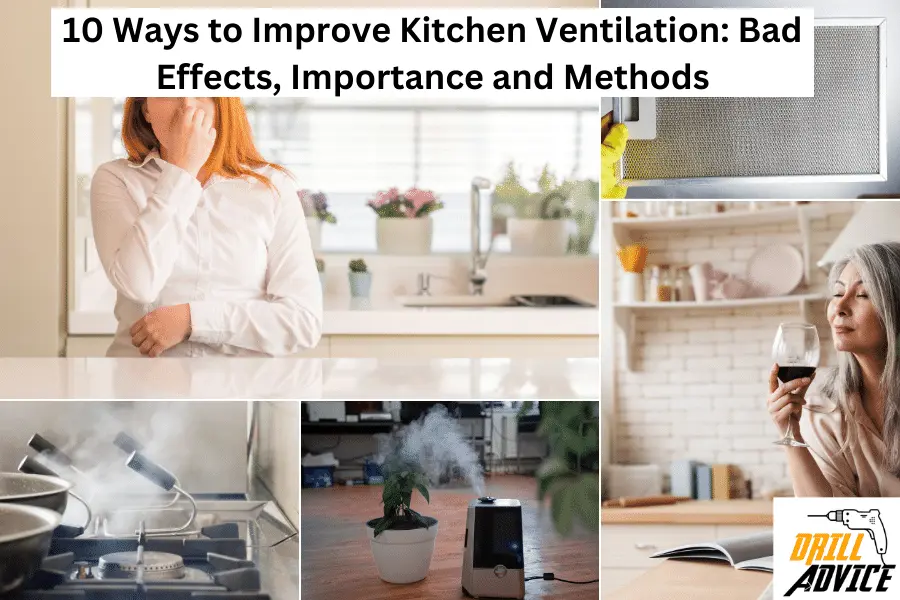
Kitchen ventilation is the process of removing smoke, steam, and cooking odors from your kitchen. It is an essential aspect of any kitchen design as it helps to maintain a healthy and comfortable environment for cooking and eating.
Proper ventilation helps to eliminate excess moisture, which can lead to mold growth and damage to your kitchen. It also helps to remove harmful gases and pollutants that can be released during cooking, such as carbon monoxide and nitrogen dioxide.
There are several types of kitchen ventilation systems available, including range hoods, downdraft systems, and exhaust fans. Each system has its advantages and disadvantages, and the best option for your kitchen will depend on your specific needs and preferences.
In addition to improving indoor air quality, kitchen ventilation can also help to reduce energy costs. By removing excess heat and moisture from your kitchen, your air conditioning system will not have to work as hard to maintain a comfortable temperature. This can result in significant savings on your energy bills over time.
What are the 5 Bad Effects of Kitchen Ventilation?
Poor kitchen ventilation can have a significant impact on your health, home, and wallet. Here are five effects of bad kitchen ventilation that you should be aware of:
- Health problems: Poor kitchen ventilation can lead to a buildup of harmful pollutants such as carbon monoxide, nitrogen dioxide, and particulate matter. These pollutants can cause respiratory problems, headaches, dizziness, and other health issues.
- Unpleasant odors: Cooking produces a lot of smells, and without proper ventilation, those smells can linger in your home for days. This can make your home uncomfortable and unpleasant to be in.
- Increased humidity: Cooking can also produce a lot of moisture, which can lead to increased humidity levels in your home. High humidity can cause mold growth, which can be harmful to your health and expensive to remediate.
- Damage to your home: High humidity levels can also cause damage to your home, such as peeling paint, warped wood, and water damage.
- Increased energy costs: Without proper ventilation, your kitchen can become very hot and stuffy, which can cause your air conditioning system to work harder and use more energy. This can lead to higher energy bills and increased wear and tear on your HVAC system.
What is the Importance of Kitchen Ventilation?
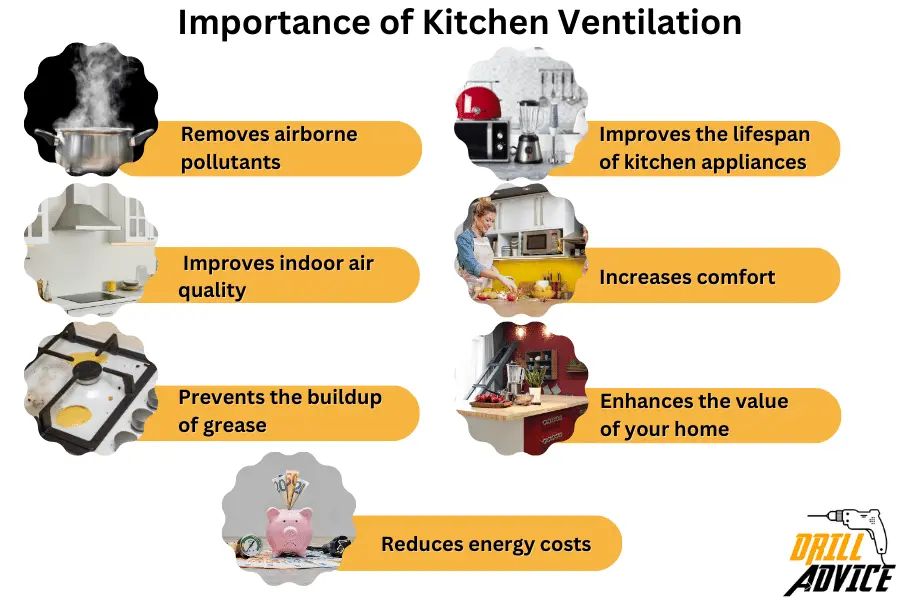
Kitchen ventilation is an essential aspect of every kitchen. It is the process of removing smoke, steam, and other airborne particles from the kitchen. The importance of kitchen ventilation cannot be overemphasized. Here are some reasons why you need to improve your kitchen ventilation:
- Removes airborne pollutants: Kitchen ventilation helps to remove airborne pollutants such as smoke, steam, and cooking odors. These pollutants can cause respiratory problems and trigger allergies.
- Improves indoor air quality: Proper kitchen ventilation helps to improve indoor air quality. It helps to eliminate excess moisture, which can lead to mold and mildew growth. It also helps to remove harmful gases such as carbon monoxide.
- Prevents the buildup of grease: Kitchen ventilation helps to prevent the buildup of grease on surfaces such as countertops, cabinets, and walls. Grease buildup can be a fire hazard.
- Improves the lifespan of kitchen appliances: Kitchen appliances such as refrigerators, ovens, and microwaves can be damaged by excess moisture and heat. Proper kitchen ventilation helps to extend the lifespan of these appliances.
- Increases comfort: A well-ventilated kitchen is more comfortable to work in. It helps to regulate the temperature and humidity levels, making it easier to prepare meals.
- Enhances the value of your home: A well-ventilated kitchen is a selling point for homebuyers. It enhances the value of your home and makes it more attractive to potential buyers.
- Reduces energy costs: Proper kitchen ventilation can help to reduce energy costs. It helps to regulate the temperature and humidity levels, reducing the need for heating and cooling.
Read More About
- Kitchen Waste Management: Types, Collecting and Disposal
- Best 8 Ways to Remove Stain Marks in the Kitchen: Methods and Products
- 7 Ways to Remove Cooking Odors in the Kitchen: Ingredients and Methods
What are the 10 Ways to Improve Kitchen Ventilation
Improving kitchen ventilation is important to keep your home fresh, healthy, and free from unpleasant cooking odors. Here are ten ways to improve kitchen ventilation:
1. Turn on the Rangehood While Using the Stove
To improve your kitchen ventilation, always turn on the rangehood while you’re using the stove. The rangehood works by capturing smoke, steam, and odors, allowing them to be exhausted outside. By consistently using the rangehood, you can ensure better air quality and avoid lingering smells in your kitchen.
2. Use Downdraft Vents
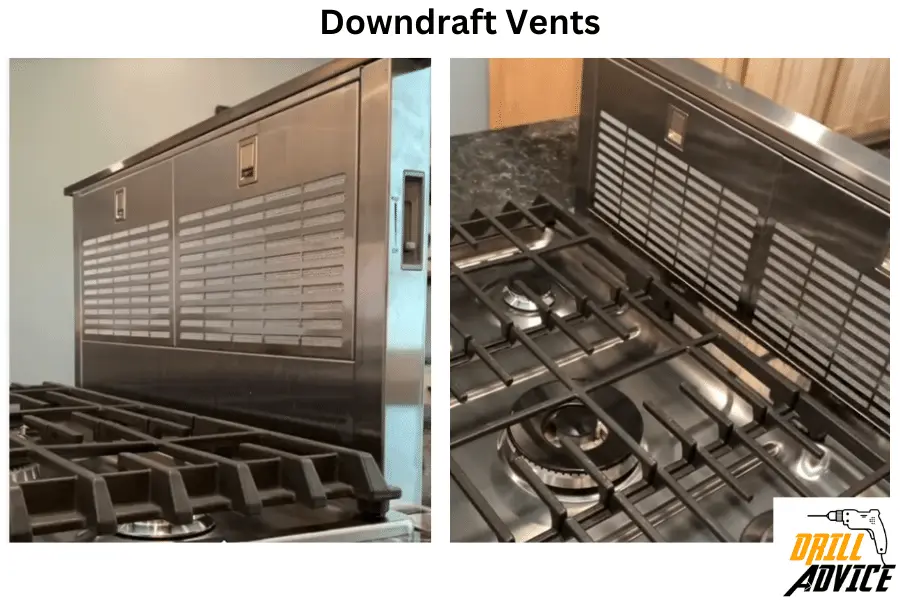
Downdraft vents suck the smoke and steam down and out of the kitchen. These ventilation systems are installed in your countertop alongside your cooktop or oven. Downdraft vents offer a sleek, modern look and can help improve air circulation in your kitchen.
3. Use Grease Filters
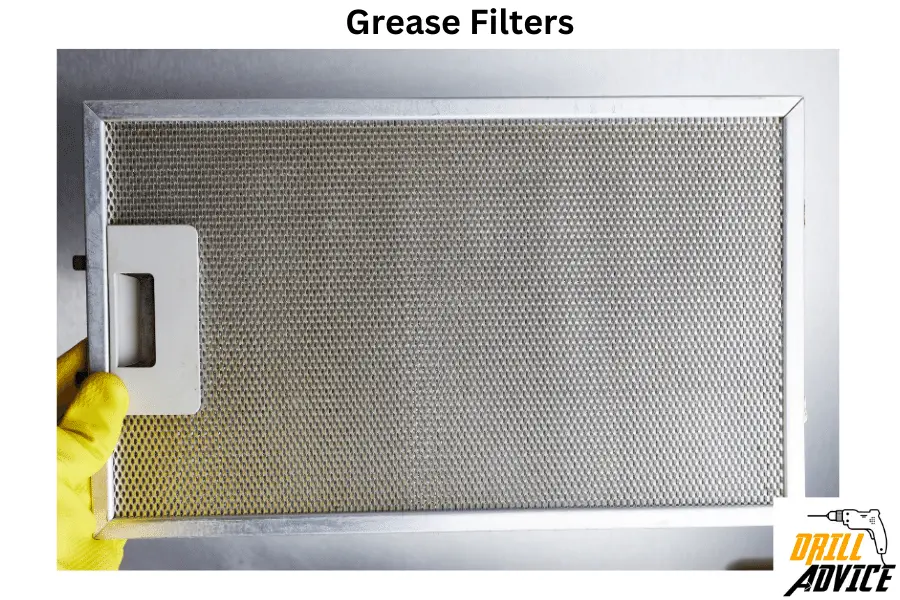
To capture grease and debris from your cooking smoke, consider installing grease filters in your rangehood or downdraft vent system. Ensure that you clean these filters regularly according to the manufacturer’s recommendations to keep them operating effectively and efficiently.
4. Open Windows and Doors While Cooking
Whenever possible, open windows and doors while you’re cooking to increase fresh air flow and help dissipate lingering smells. This is simple but effective method can greatly improve air circulation and reduce the build-up of odors in your kitchen.
5. Install Ceiling Fan
Installing a ceiling fan in your kitchen can help redistribute the air and improve overall ventilation. The fan should be set to exhaust warm air and steam towards external vents or open windows. This will help prevent excess heat and humidity from building up, ensuring a comfortable cooking environment.
6. Use Ventilation Fans
Ventilation fans, installed in your kitchen walls or ceiling, can provide an added boost to your kitchen’s air circulation. These fans can be used in addition to your rangehood system to quickly and efficiently remove smoke, steam, and odors from your cooking area.
7. Use an Indoor Air Purifier

An air purifier can help improve air quality in your kitchen by removing particles and allergens, as well as odors. Look for a purifier with a HEPA filter and an activated carbon filter, which are designed to remove both solid and gaseous pollutants.
8. Grow a Plant Inside the Kitchen
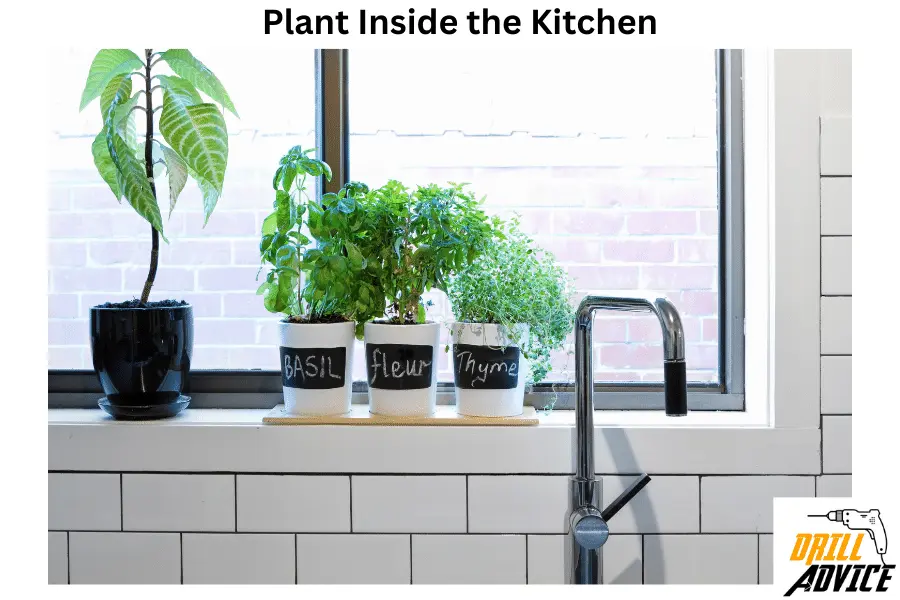
Incorporate plants into your kitchen design to help naturally purify the air. Plants like spider plants, peace lilies, and golden pothos are particularly effective at removing airborne pollutants and improving air quality.
- Spider Plant (Chlorophytum comosum): Known for its ability to purify air by removing pollutants like formaldehyde and xylene, it’s a hardy plant that requires minimal maintenance.
- Peace Lily (Spathiphyllum): Not only does it bloom with beautiful white flowers, but the Peace Lily also excels in removing airborne toxins like ammonia and benzene.
- Boston Fern (Nephrolepis exaltata): This plant is known to act as a natural humidifier, increasing moisture in the air and removing pollutants like formaldehyde.
- Golden Pothos (Epipremnum aureum): An easy-to-care-for plant, the Golden Pothos can thrive in various lighting conditions and helps in removing indoor air pollutants.
- Bamboo Palm (Chamaedorea seifrizii): Effective at removing chemicals like formaldehyde and benzene, it also adds a touch of tropical appeal to your kitchen.
9. Clean the Stove and Downdraft Filters Regularly
To maintain optimal kitchen ventilation, clean your stove, rangehood, and downdraft filters regularly. This will ensure that your ventilation system is working at its peak, capturing and exhausting unwanted particles, grease, and odors that can accumulate during cooking.
10. Improve Seals and Insulation
Inspect and upgrade the seals around your kitchen windows and doors, and add weatherstripping if necessary. This can help to prevent drafts and improve overall insulation, making your kitchen more comfortable and energy-efficient. Additionally, ensure that any gaps or cracks in your walls, floors, and ceilings are sealed to minimize heat transfer and improve airflow.
By following these 10 ways to improve kitchen ventilation, you can create a more comfortable, healthier, and enjoyable cooking environment for yourself and your family.
